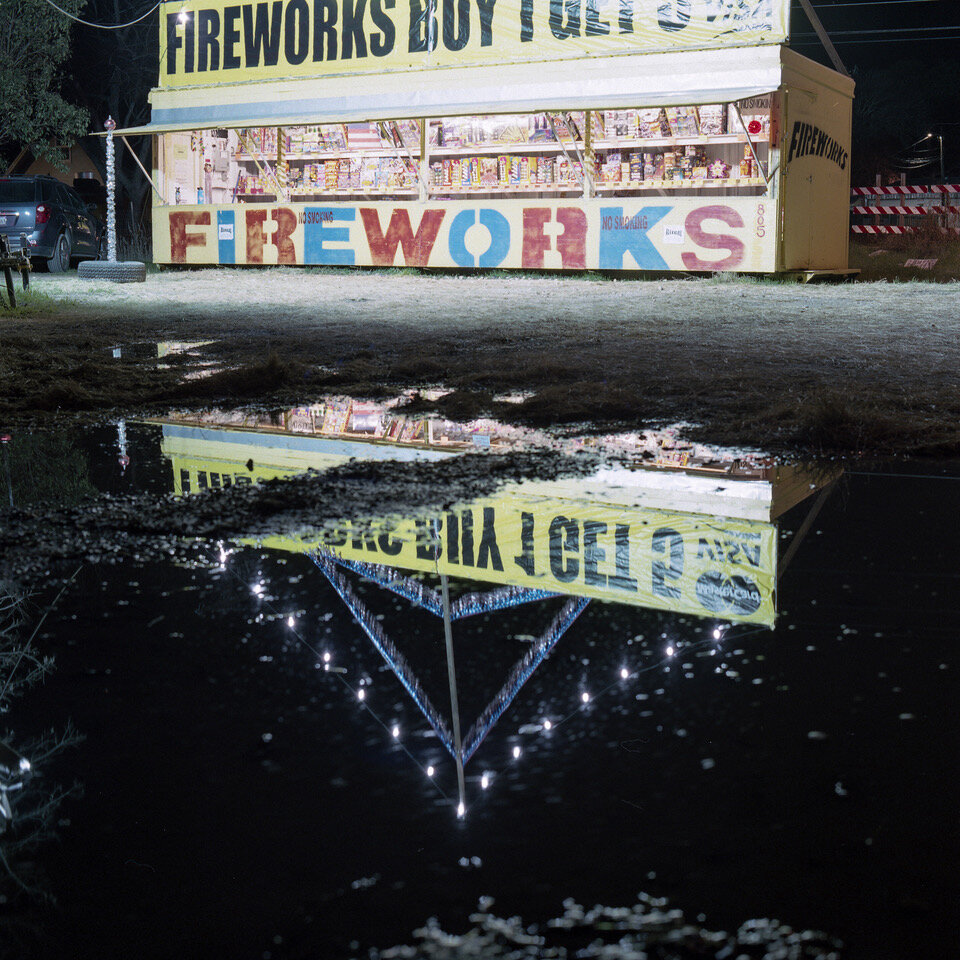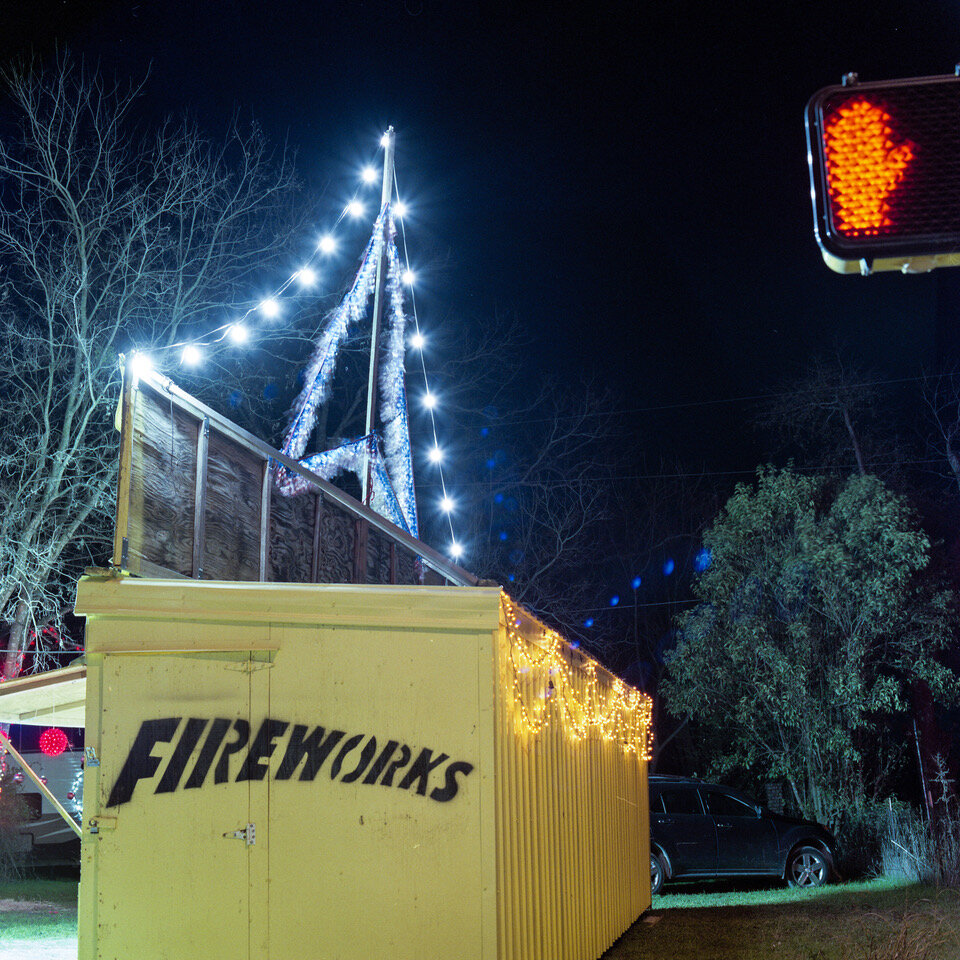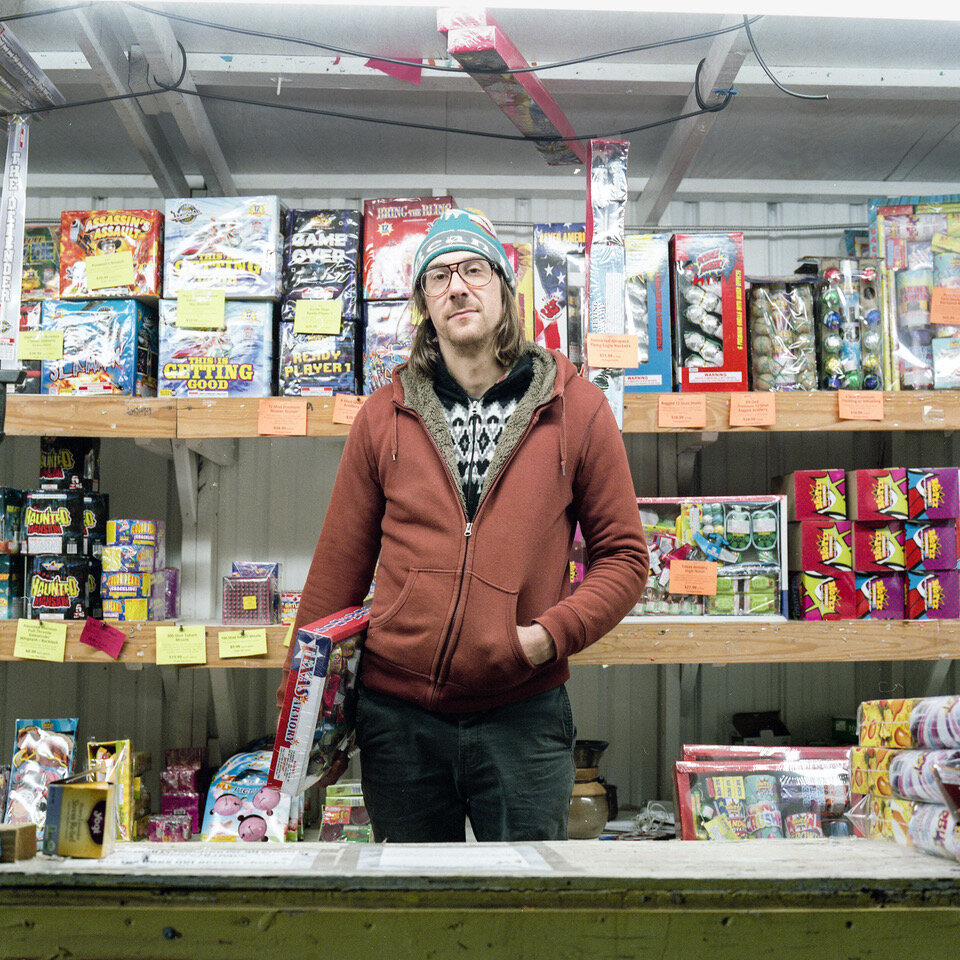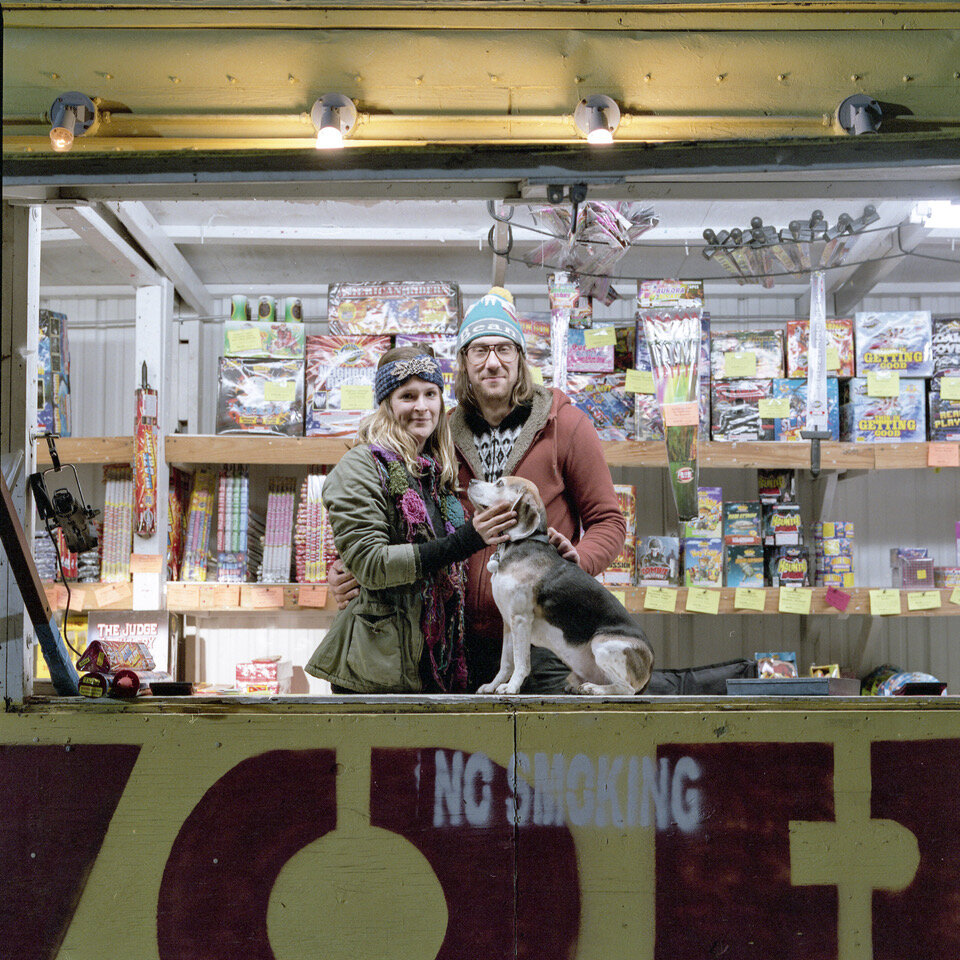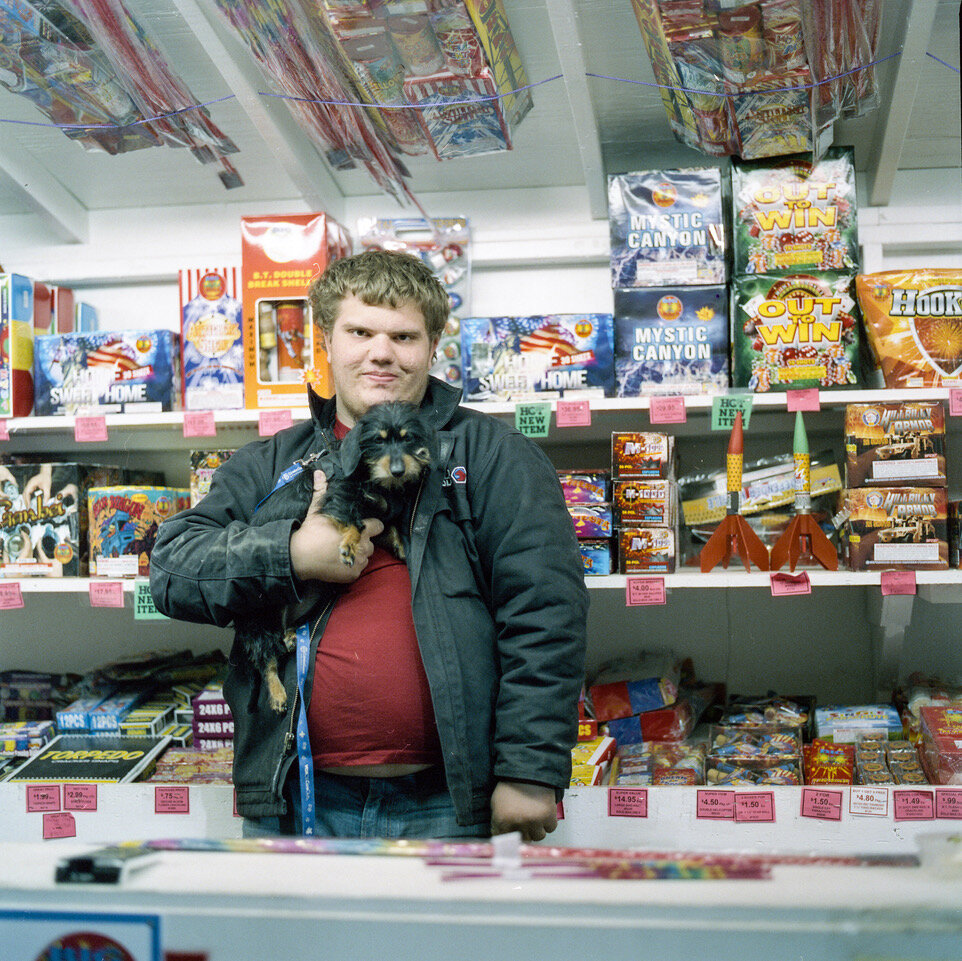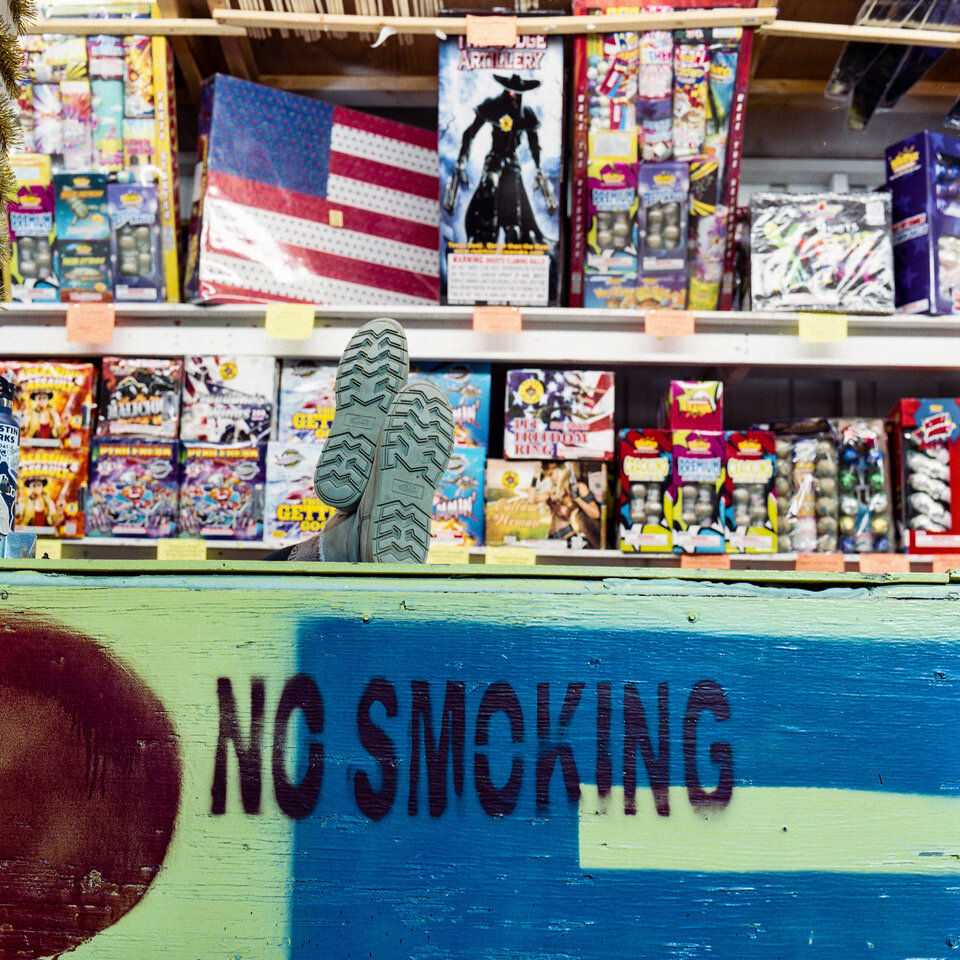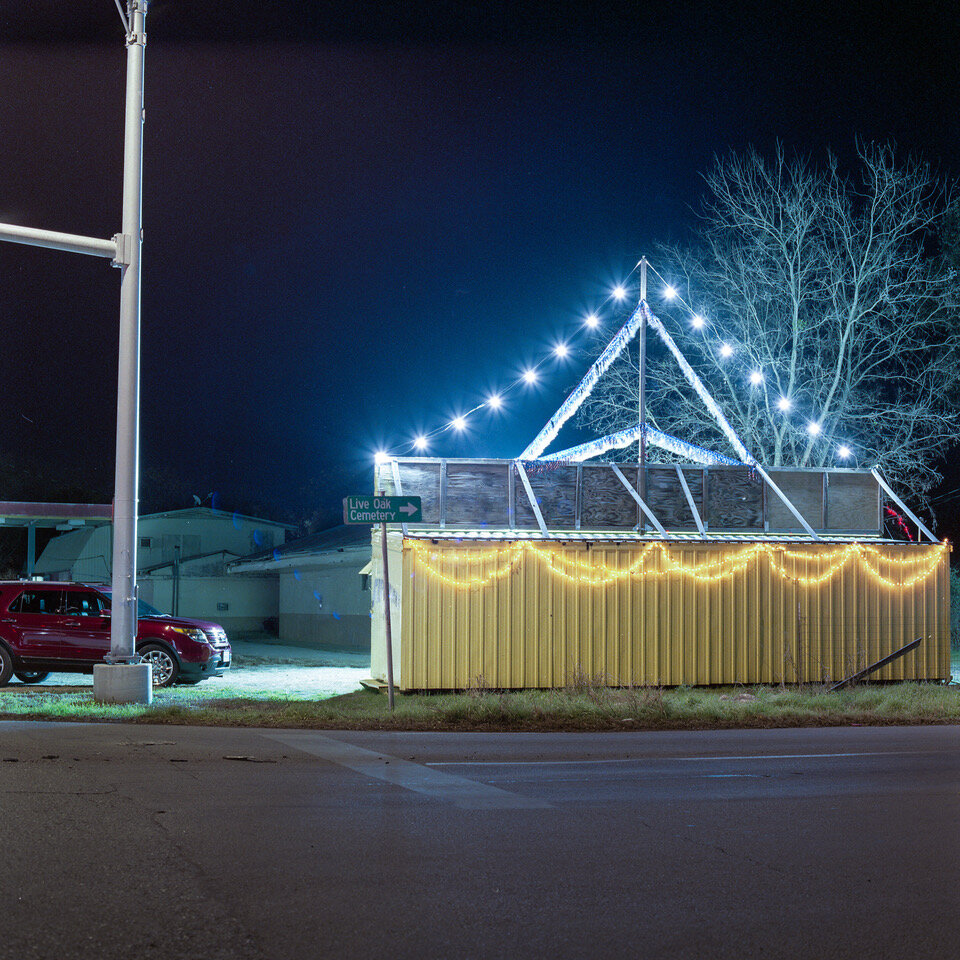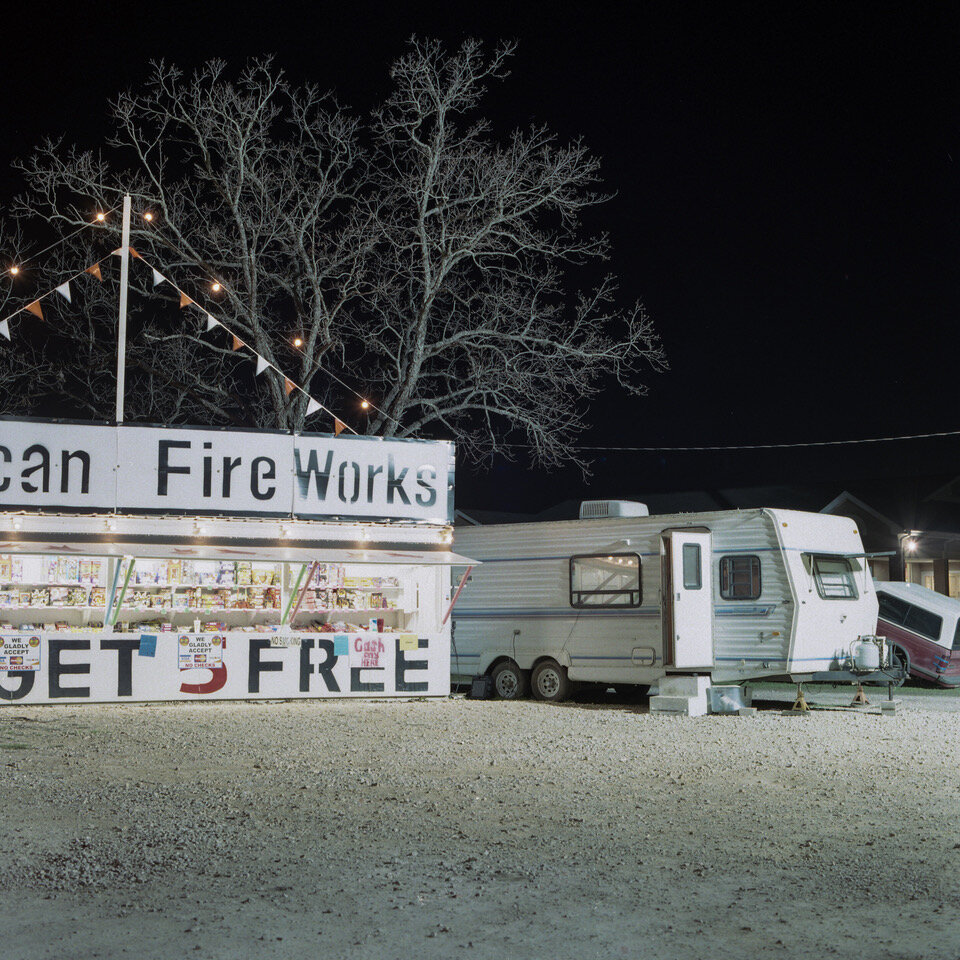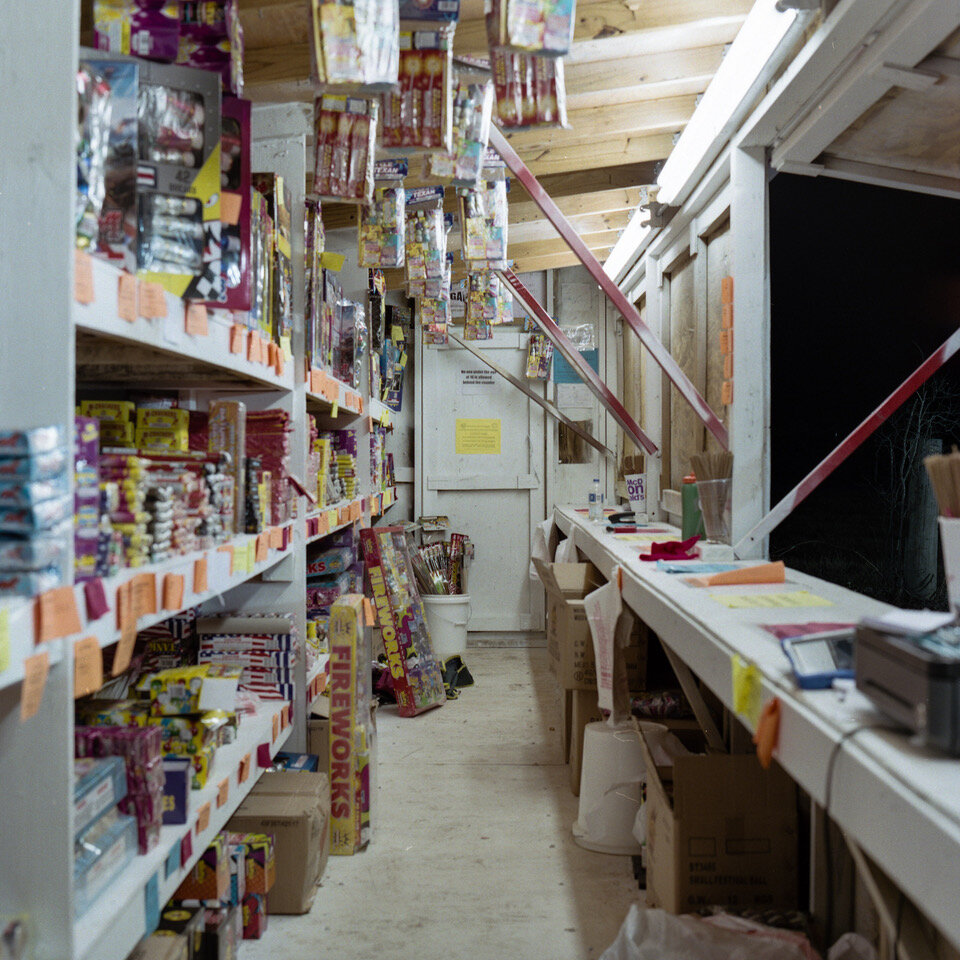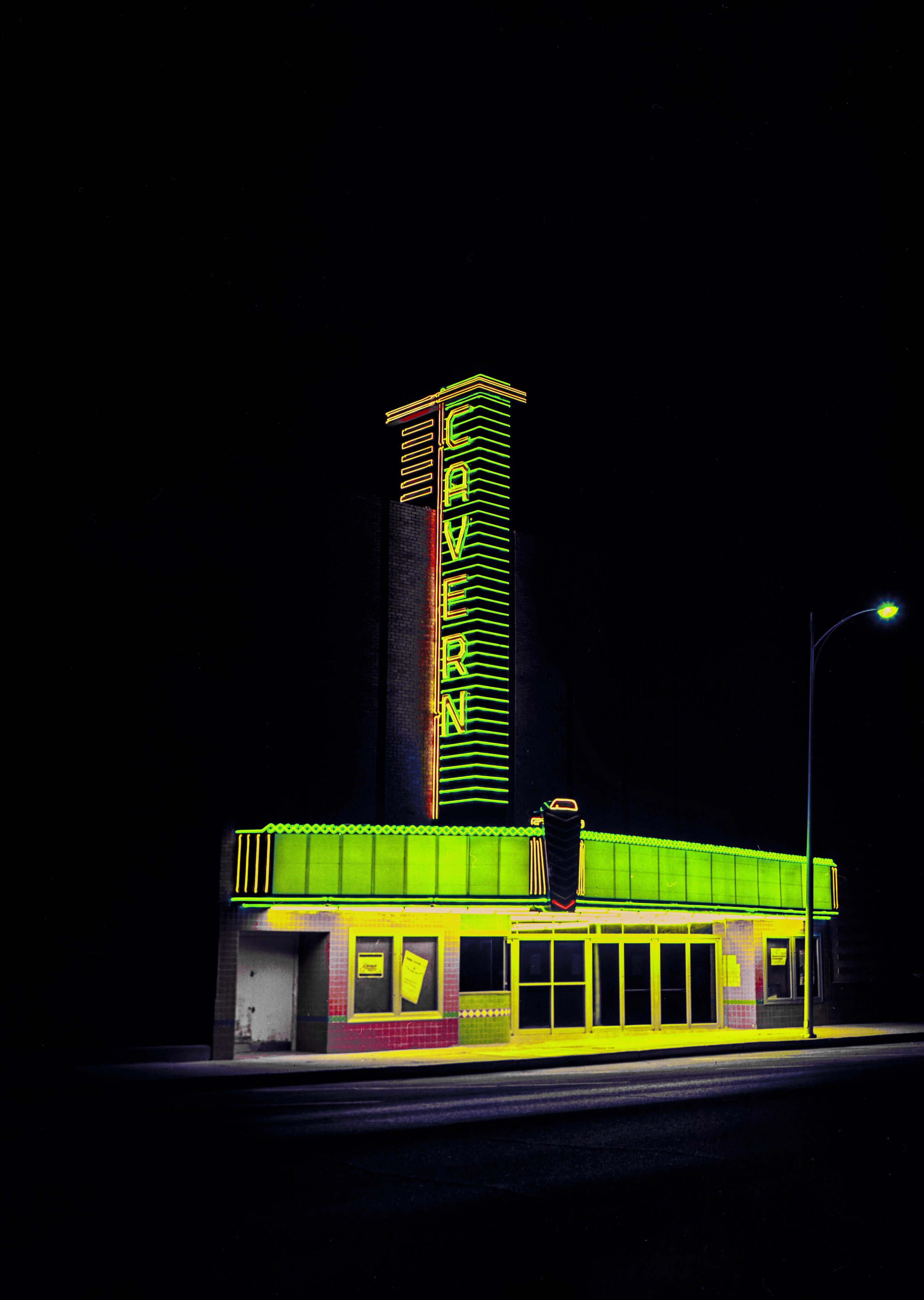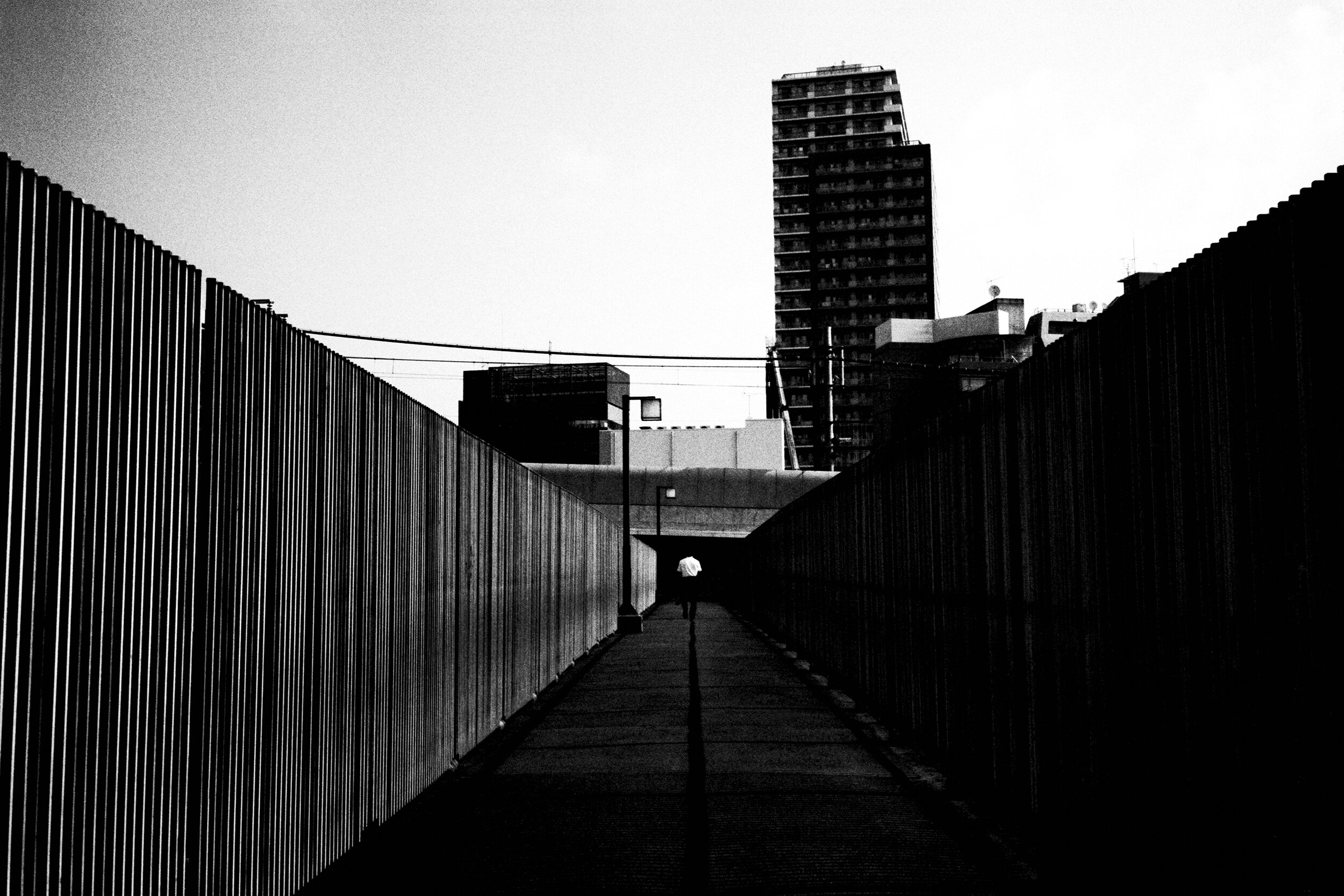I’ve always loved how fireworks stands come to life at night. Driving past them on the few days a year they are open, I find myself staring at them like a deer in headlights. The bright lights and colors just pop out of the darkness.
Being a fan of Todd Hido’s ‘House Hunting’ had inspired me to shoot buildings at night on the east side of Austin. I worked on medium format and loved the way those shots turned out, so I wanted to do something similar in this series. I had a good grasp on nighttime exposures from doing that too.
I was hesitant to approach the first stand, and did so without my camera, there were no customers around so I couldn’t get away with just setting up my tripod and shooting. The owners were really cool and allowed me to photograph the stand and even a few portraits. Luckily, they knew a few owners of the other stands in the area so I approached those with a good reference.
After the first night and three locations, I ventured into a different part of town and shot three more the next night. I plan to shoot more in this series leading up to July 4th.
For this series, I shot on Bronica SQ-Ai and a mix of Fuji 400H and Portra 400. The Bronica is great for long exposures; it has a mirror lock-up and I use a cable release to fire the leaf shutter which doesn’t allow for any camera shake. Shooting at F8 and using mirror lock up has given me the best results shooting at night. I wasn’t particular about what film I was going to use for this project, I just knew I wanted to shoot color.



